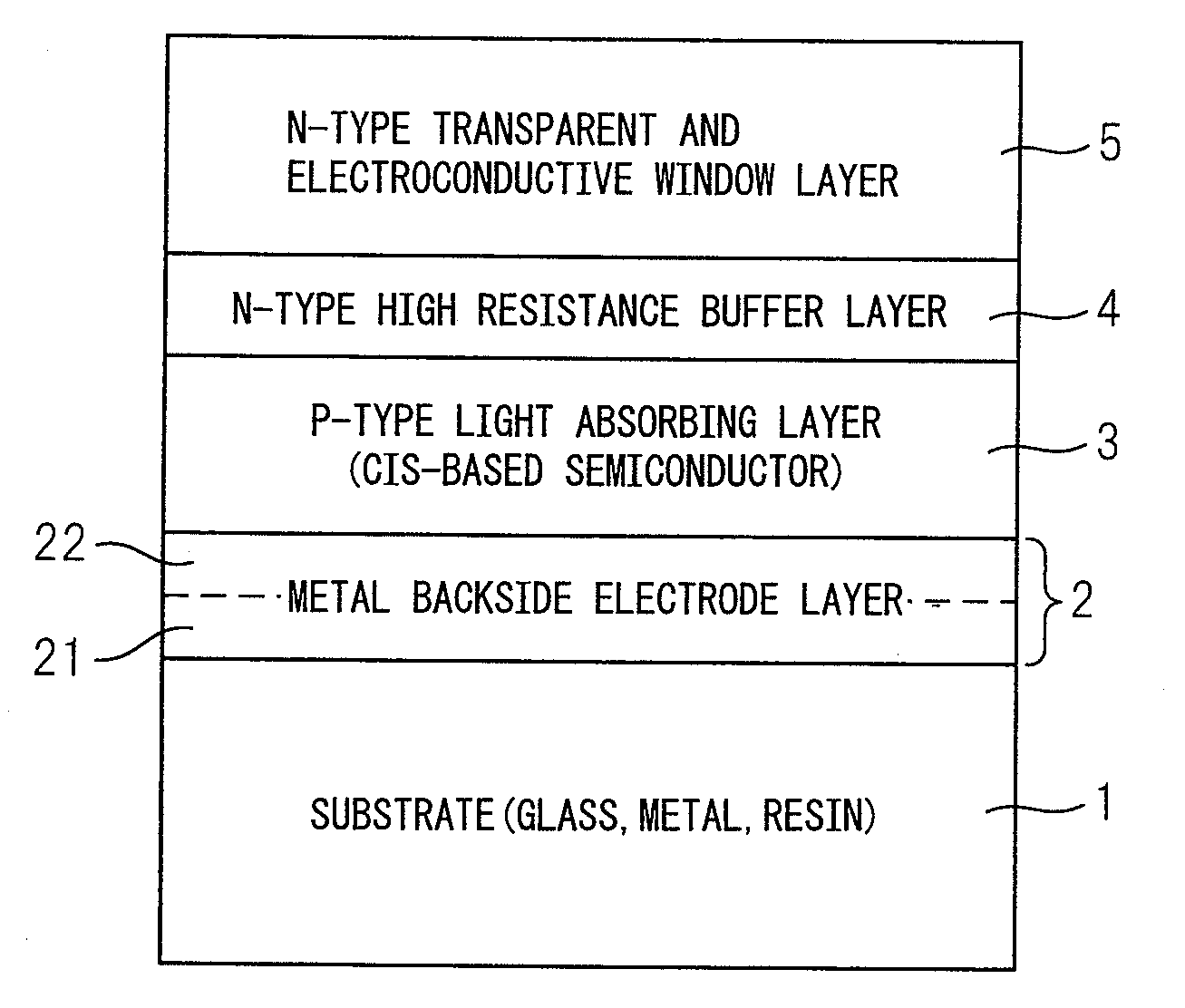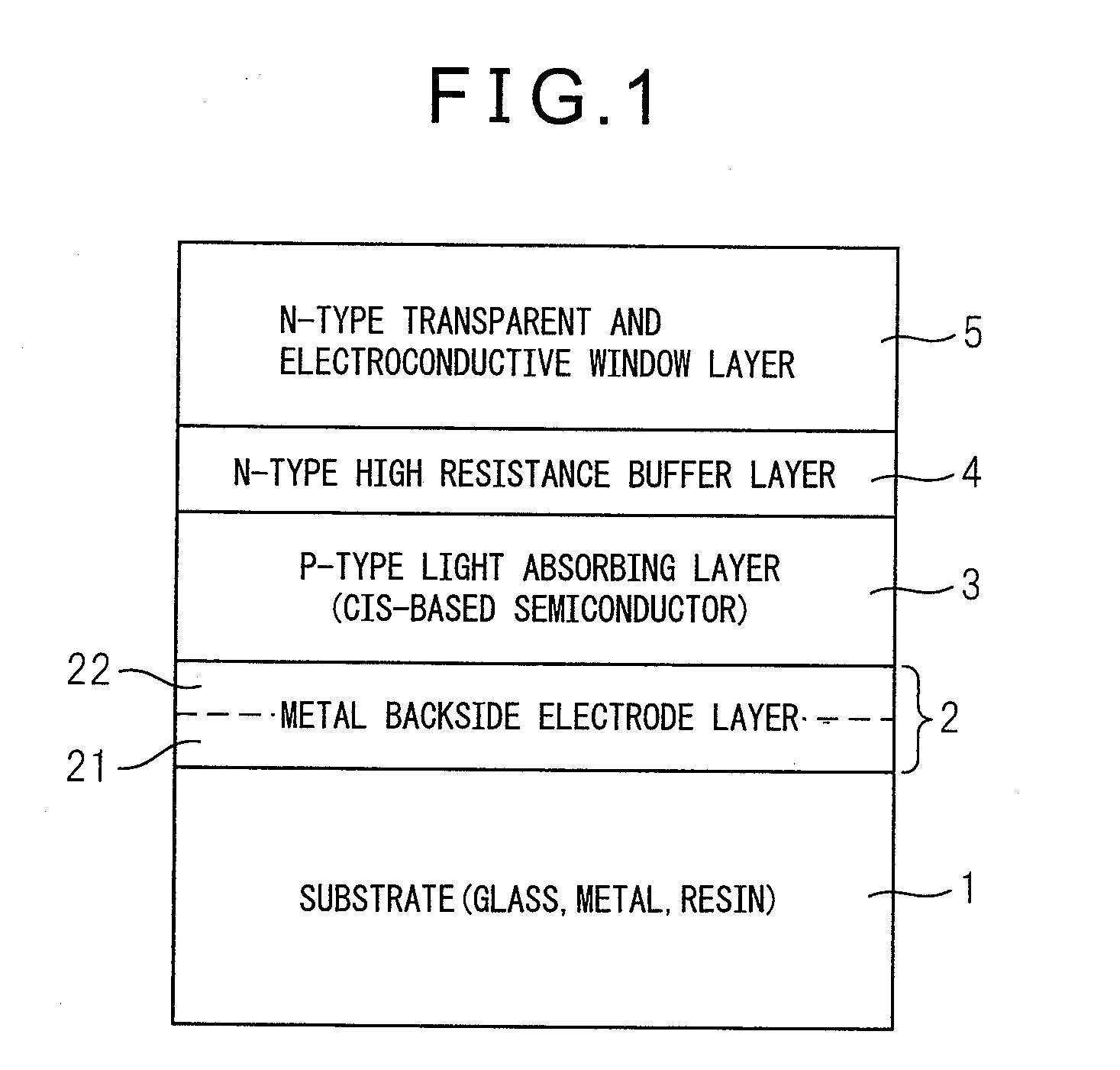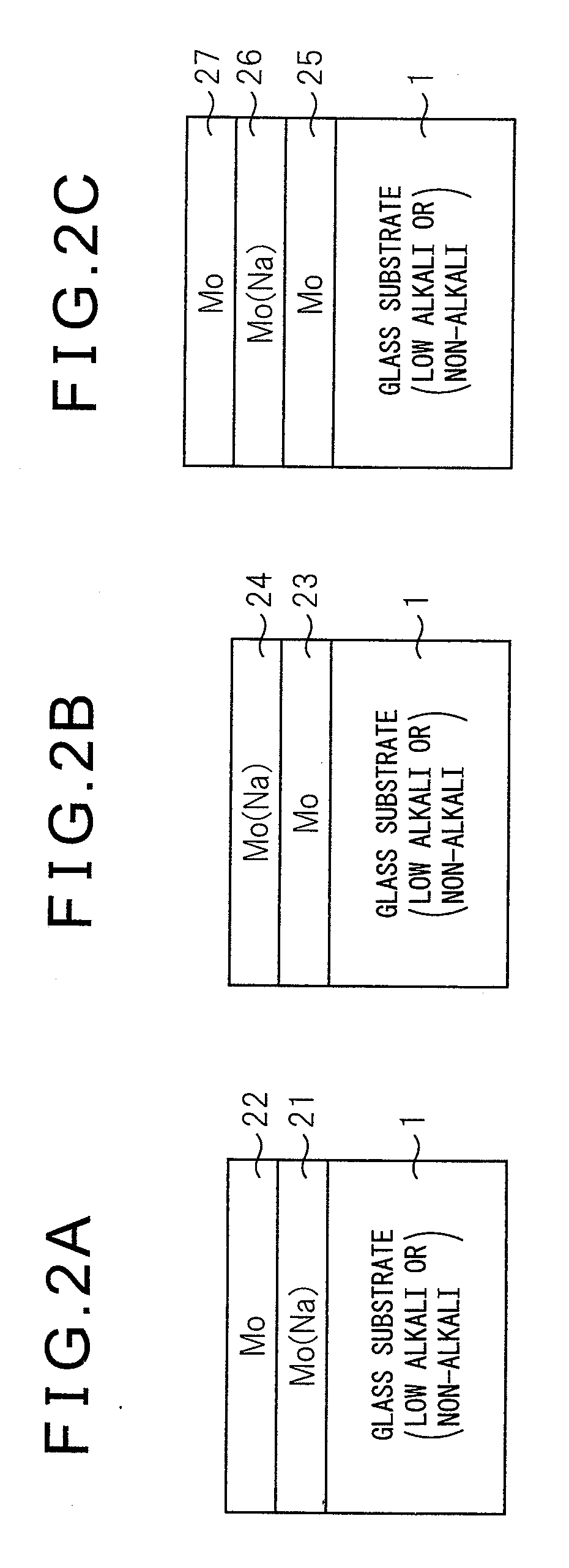Method for manufacturing cis-based thin film solar cell
a technology of thin film solar cells and manufacturing methods, applied in the field of manufacturing a cis-based thin film solar cell, can solve the problems of low strain point, glass contains little or no alkali, and the formation temperature cannot be increased, so as to improve the efficiency of addition, and improve the effect of lot-to-lot reproducibility
- Summary
- Abstract
- Description
- Claims
- Application Information
AI Technical Summary
Benefits of technology
Problems solved by technology
Method used
Image
Examples
experimental example 1
[0042]After forming a metal backside electrode on glass substrate 1 in the order of Mo layer 21 with high Na concentration and Mo layer 22 with low Na concentration, p-type light absorbing layer 3, n-type high resistance buffer layer 4 and n-type transparent and electroconductive window layer 5 were formed according to the process conditions of Table 1. On conditions that Na concentration in the low Na target was fixed to 10 at ppm and Na concentration in the high Na target was set to the four levels stated in Table 2, film thicknesses of Mo layer 21 with high Na concentration and Mo layer 22 with low Na concentration were changed. The experimental results of this case are illustrated in Table 3.
TABLE 3Experimental results 1Low NaHigh NaAverage NaHigh NafilmfilmConversionconcentrationconcentrationthicknessthicknessefficiencyin CIS[at. %][μm][μm][%][at. %]0.100.513.70.060.10.10.412.80.040.10.20.311.80.020.10.30.29.70.010.10.40.16.10.010.300.515.00.180.30.10.415.90.120.30.20.314.50.07...
experimental example 2
[0044]After forming metal backside electrode 2 in the order of Mo layer 21 with high Na concentration and Mo layer 22 with low Na concentration, p-type light absorbing layer 3, n-type high resistance buffer layer 4 and n-type transparent and electroconductive window layer 5 were formed according to the process conditions of Table 1. Then, photoelectric conversion efficiency of a resultant CIS-based thin film solar cell was measured. In this case, on conditions that Na concentration in the low Na target was set to the three levels stated in Table 2 and the Na concentration in the high Na concentration target was fixed to 1 at. %, film thicknesses of Mo layer 21 with high Na concentration and Mo layer 22 with low Na concentration were changed. The experimental results of this case are illustrated in Table 4.
TABLE 4Experimental results 2Low NaHigh NaAverage NaLow NafilmfilmConversionconcentrationconcentrationthicknessthicknessefficiencyin CIS[at. ppm][μm][μm][%][at. %]100.511.60.6810.1...
PUM
 Login to View More
Login to View More Abstract
Description
Claims
Application Information
 Login to View More
Login to View More - R&D
- Intellectual Property
- Life Sciences
- Materials
- Tech Scout
- Unparalleled Data Quality
- Higher Quality Content
- 60% Fewer Hallucinations
Browse by: Latest US Patents, China's latest patents, Technical Efficacy Thesaurus, Application Domain, Technology Topic, Popular Technical Reports.
© 2025 PatSnap. All rights reserved.Legal|Privacy policy|Modern Slavery Act Transparency Statement|Sitemap|About US| Contact US: help@patsnap.com



